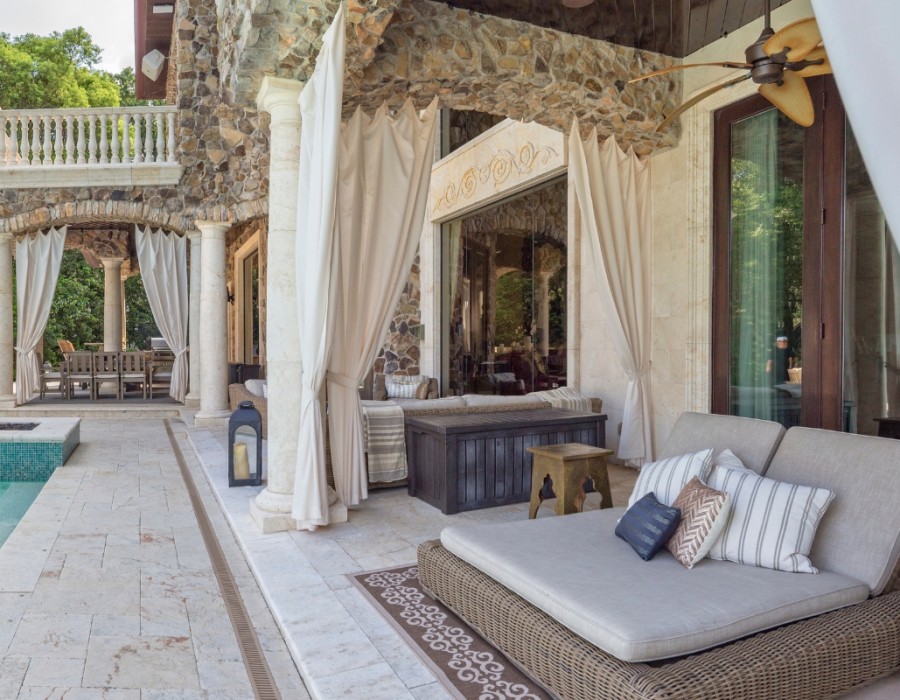Introduction:
There has been a notable movement in favour of improving outdoor living areas in recent years. These days, backyards, patios, and gardens are more than simply unutilized spaces on houses; they are extensions that provide a haven for comfort and leisure. There is a growing interest in outdoor living design due to the appeal of dining outside, spending time in the great outdoors, and spending time in nature. To create a perfect combination of utility, aesthetics, and comfort, carefully considering a variety of components is necessary when crafting a beautiful outdoor area. We explore the crucial elements that go into creating a charming outdoor sanctuary in this extensive tutorial.
Strategic Layout and Spatial Planning:
A compelling outdoor living area's design and spatial arrangement are its cornerstones. The layout of the facility should be carefully thought out to ensure smooth transitions between various areas, including eating, relaxing, and play areas. A well-thought-out arrangement makes use of the landscape's inherent qualities, maximising vistas, sunshine, and existing plants to improve the atmosphere as a whole.
Functional Zones and Activities:
When planning outdoor areas for a range of uses and activities, versatility is essential. Including separate areas for cooking, eating, lounging, and entertainment guarantees that the area meets the various demands of its occupants. Every place, from roomy dining rooms for entertaining to warm fire pits for winter nights, should be carefully designed to optimise use and pleasure.
Landscape Integration and Greenery:
To create an outdoor paradise that is visually appealing, it is essential to include landscaping components and lush flora. Adding native trees, bushes, and plants enhances the natural beauty while also supporting sustainability and biodiversity. In addition to offering seclusion, shade, and natural cooling, well-placed vegetation may also improve outdoor comfort.
Architectural Features and Structures:
Architectural features establish the character of outdoor areas and act as focal points. In addition to adding visual appeal, these structures—which range from pergolas and arbours to gazebos and trellises—also offer shelter, shade, and architectural definition. Adding elements like metal, stone, and wood may improve the visual appeal even further while blending in with the surrounding environment.
Thoughtful Lighting Design:
When it comes to bringing outdoor areas back into use after nightfall and establishing a fascinating atmosphere, lighting is essential. A well-thought-out lighting plan combines accent, ambient, and task lighting in equal measure to draw attention to landscape, paths, and architectural aspects. Outdoor spaces gain depth and drama from lighting design, which can range from delicate string lights to dramatic uplighting.
Comfortable Furnishings and Accessories:
When building outdoor living design areas, comfort is of the utmost importance. Cosy and appealing settings can only be achieved by carefully choosing furniture and accessories. Rattan, teak, and wicker are weather-resistant materials that guarantee lifespan and durability, while soft fabrics and cushions provide cosiness and warmth.
Water Features and Elements:
Accessories like throw pillows, outdoor rugs, and ornamental elements give a room character and flair when they are thoughtfully placed in it.
Adding water elements to outdoor settings, such ponds, fountains, or even a simple bubbling urn, may create a peaceful and serene atmosphere. The tranquil sound of running water filters out distracting sounds and produces a peaceful atmosphere that encourages reflection and relaxation. Water features also draw animals, which strengthens the bond with the natural world and encourages biodiversity.
Climate Control and Comfort Solutions:
In order to minimise harsh weather and temperatures, climate control systems must be taken into account in order to maximise comfort in outdoor living design. In cooler months, blankets, fire pits and outdoor heaters prolong the use of outdoor spaces, while umbrellas, pergolas and retractable awnings offer protection from the sun. Adding accessories like outside curtains, misting systems, and fans improves usage and comfort all year round.
Sustainable Practices and Eco-Friendly Design:
Adopting eco-friendly design concepts and sustainable techniques not only lessens the impact on the environment, but also improves outdoor areas' resilience and long-term sustainability. A few examples of sustainable design techniques are using drought-tolerant plants, collecting rainwater, and using permeable pavement materials. A more ecologically aware outdoor space may also be achieved by utilising recycled materials, energy-efficient lighting, and eco-friendly furniture.
Personalization and Expression of Style:
In the end, outdoor areas that capture the essence of their occupants' personalities and styles tend to be the most fascinating. Adding personal touches to outdoor living spaces gives them personality and charm, whether it's through handpicked décor accents, custom-designed features, or one-of-a-kind furniture pieces. People may build outdoor spaces that genuinely reflect their lifestyle and interests by personalising them with a wide range of options, from colourful colour schemes to diverse décor themes.
Integration of Technology and Smart Features:
In the current digital era, adding technology to outdoor living areas may improve efficiency, enjoyment, and convenience. Smart elements provide outdoor spaces a level of sophistication and convenience. These include controlled irrigation and lighting controls, outdoor speakers, and entertainment systems. The smooth adjustment of temperature control components is made possible by smart thermostats, motorised blinds, and remote-controlled awnings, which ensure maximum comfort with the least amount of effort. Furthermore, new developments in outdoor cooking appliances, including pizza ovens and smart grills, enhance the culinary experience by enabling homeowners to prepare meals with style and accuracy while taking advantage of the great outdoors.
Conclusion:
A beautiful outdoor living area requires the intentional synthesis of many different aspects, from maintenance instructions and accessibility features to technology advancements and safety considerations. Homeowners may construct outdoor havens that not only represent their own style and tastes but also improve their quality of life and connection to nature by including five crucial elements into the planning process. Whether it's a practical rooftop getaway, a bright patio sanctuary, or a calm garden hideaway, the secret is to design areas that encourage rest, renewal, and life-changing events for years to come. The options for creating the ideal outdoor sanctuary are virtually limitless when meticulous planning, close attention to detail, and a little imagination are used.





Comments